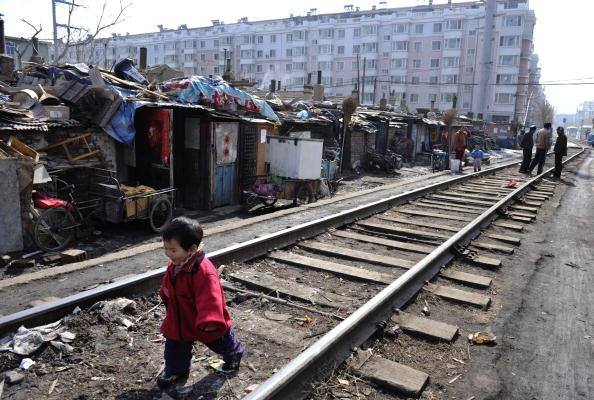Many of China’s ordinary citizens are just barely making ends meet, because of debt concerns and income disparities, according to an now-deleted article published by a researcher at the China-based think tank Suning Institute of Finance.
Fu Yifu, who does macroeconomics research, published an article that analyzes the divergent rates at which China’s economy has grown, compared with the growth of ordinary citizens’ household wealth. The post, which appeared on WeChat, a popular social media platform, has been deleted—likely because it did not paint the picture of prosperity that the Chinese regime would like.
Fu wrote that GDP data is often cited to demonstrate a country’s wealth. By that measure, China’s per capita GDP (Gross Domestic Product)—roughly $9,000 in 2017—is fast approaching the “middle income trap”: a phenomenon whereby after reaching middle-income levels, a country’s growth stalls and cannot make the leap toward becoming an advanced economy. Fu estimated that point is typically when per capita GDP reaches $12,000.
However, that number does not truly reflect the wealth of average Chinese families.
Fu instead used another metric: the per capita disposable income.
Whether in the countryside or major cities, Fu found that disposable income was far lower than GDP. In 2017, in the countryside, a person’s disposable income was less than a quarter of the nation’s overall per capita GDP.
In terms of wages, the numbers were also not optimistic. Between 1978 to 2017, wages in cities and towns grew about 13.08 percent annually—compared with the 13.76 percent annual rate at which public finance revenue grew. That revenue is usually derived from taxes, which indicates that the state’s wealth was growing faster than that of its citizens.
Income disparity, a huge social problem in China, is apparent in another statistic: 90 percent of the country’s workers earn less than 50 percent of the wages, while the remaining 10 percent—company executives and staff working in monopolized industries—take home more than 50 percent of wages.
Another serious issue crippling ordinary citizens is debt. In 2017, household debt stood at 49 percent of GDP; that’s up from 18 percent in 2008, and just 3 percent in 1996.
This has led to a Chinese expression: Every month, one gets 30,000 yuan (about $4,300), but must live like there’s only 3,000 yuan ($430).
Fu’s article noted that the reality of Chinese people’s lives is similar to a scene from a popular Chinese TV drama that aired in 2009, called “Dwelling Narrowness.”
One of the characters speaks of the financial burdens she faces: mortgage; clothing and food; tuition for a child’s daycare; money used to bribe people in order to get around; transportation fees; cell phone bills; property management fees; water, gas, and electricity bills.
And despite the Chinese regime’s talk of prosperity, much of the population remains in poverty. According to World Bank data, about 493 million, or 36 percent of China’s population, live on $5.50 a day or less.





